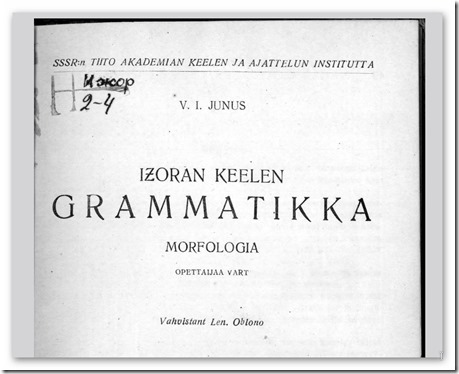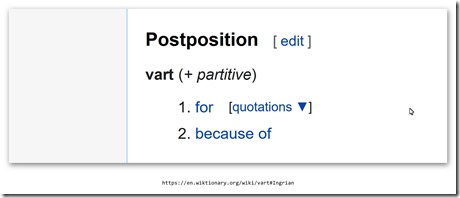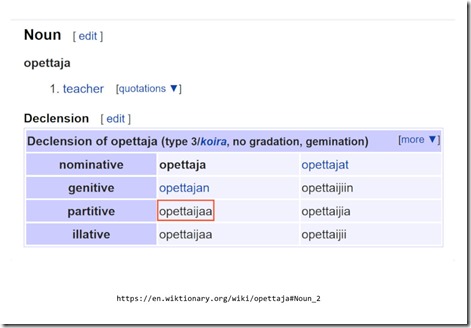Latin
|
Ingrian
|
English
|
|
Ars longa vita brevis. |
Kulttuura pitkä elo lyhyt. |
Art is long; life is short. |
|
Versiculi poetae immortales sunt. |
Kirjuttajan rääyt evät koole. |
The verses of the poet are immortal. |
|
Caballi herbam comedunt. |
Hepoiset söövät heinää. |
Horses eat grass. |
|
Vox populi, vox Dei |
Kansan ääni ono Jumalan ääni. |
The voice of the people is the |
|
Candela in mensa ardet |
Kyntteli pallaa kanneel. |
The candle burns on the table. |
|
Cogito, ergo sum. |
Miä duumaan, siks elän. |
I think, therefore, I am. |
|
Carmen cantas. |
Siä laulat laulun. |
You (thou) sing a song. |
|
Casa mea alba est et casa tua viridis est. |
Miun talo ono valkia a siun talo ono rohhoin. |
My cottage is white, and your (thine) cottage is green |
Kalenteri
-
Viimeisimmät artikkelit
Viimeisimmät kommentit
Arkistot
Kategoriat
- Arabic
- Budinos
- Demokratia
- Ei kategoriaa
- Espanja
- Español
- Esperanto
- Ido
- Ido language
- In English
- Ingrian
- Inkeroismurteet
- Interlingua
- Italian kieli
- Juhlapäivät
- Karjalan kieli
- Karjalan murre
- Kielet
- Kielten tutkimista
- Kirjallisuus
- Kuvataide
- Latina
- Latino Sine Flexione
- Linux
- Literature
- Livvinkarjala
- Luonto
- Musiikki
- På svenska
- Poetry
- Runous
- Ruotsin kieli
- Suomen kieli
- Talous
- The Arabic Language
- Tietotekniikka
- Ukrainian language
- Uskonto
- Venäjän kieli
- Vepsän kieli
- Viron kieli
- Visual Arts
- Yhteiskunta
- Yleinen
- русский
Follow Me
Meta












